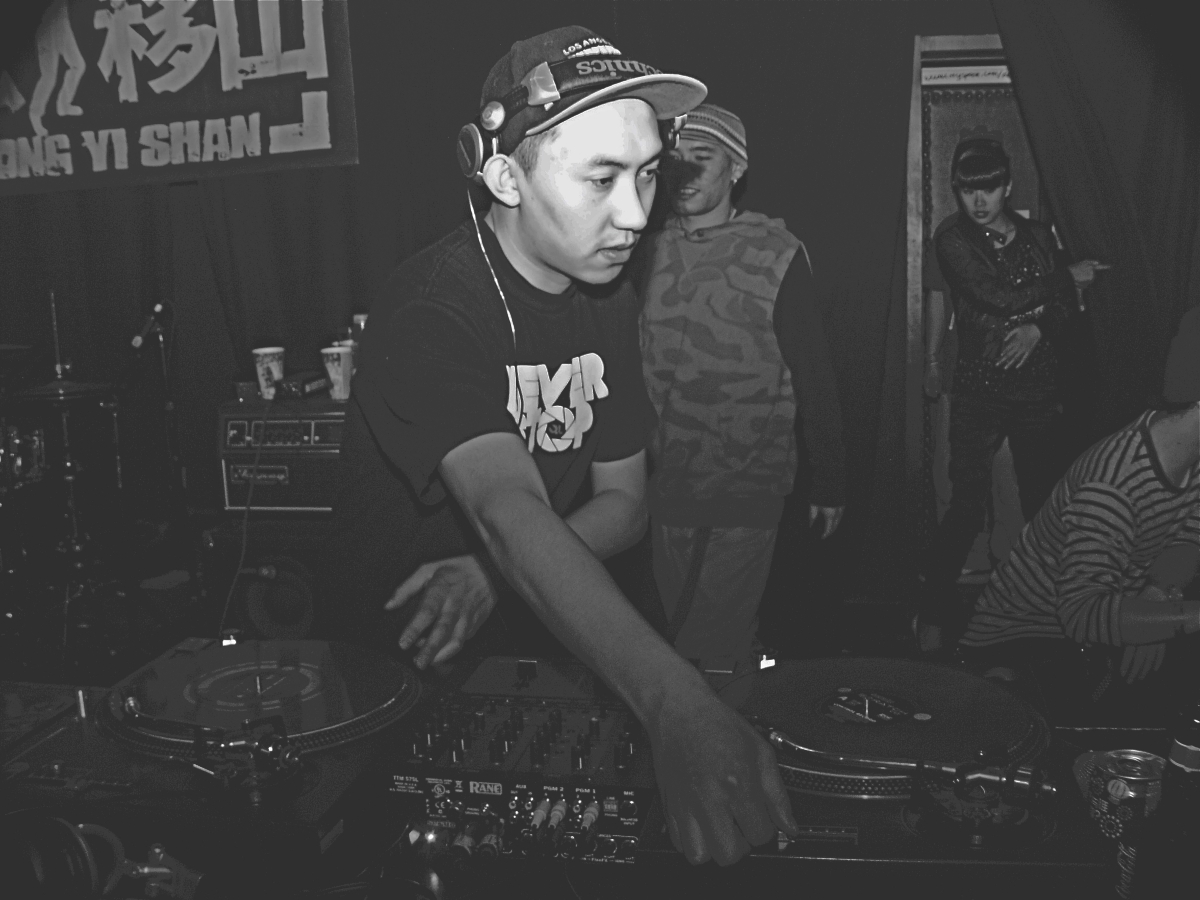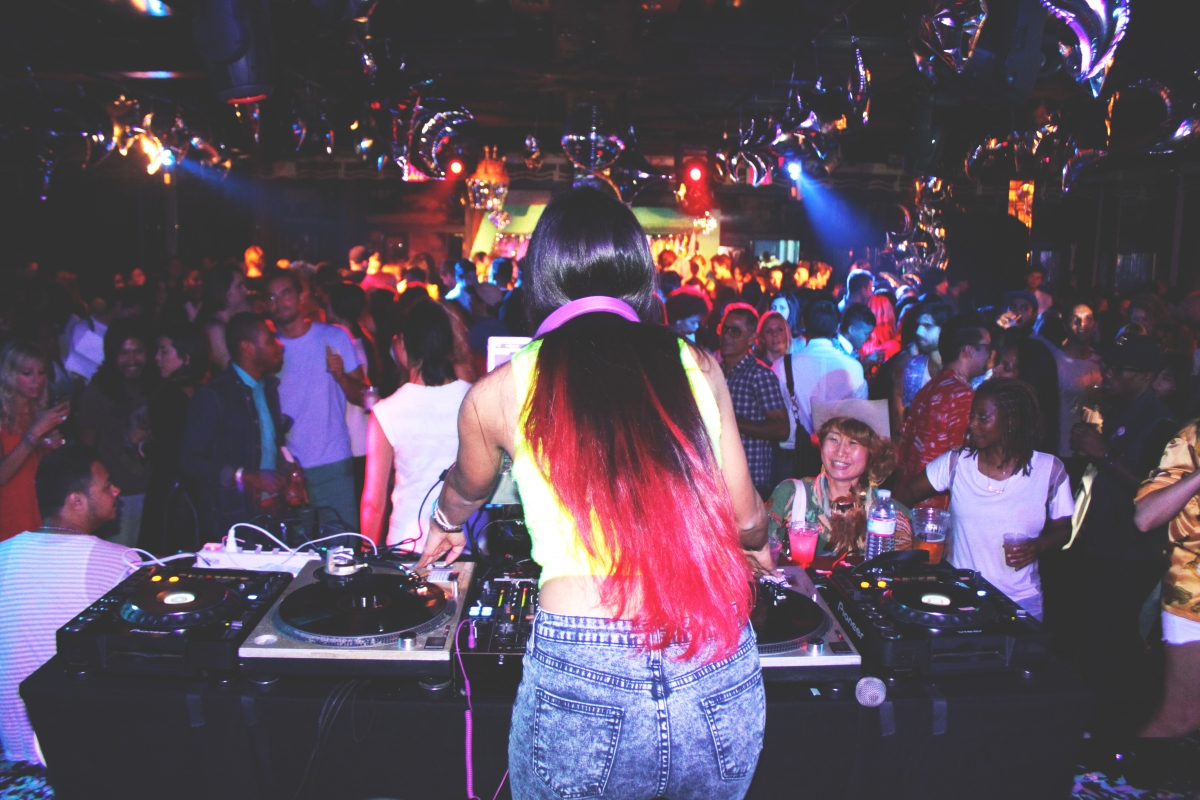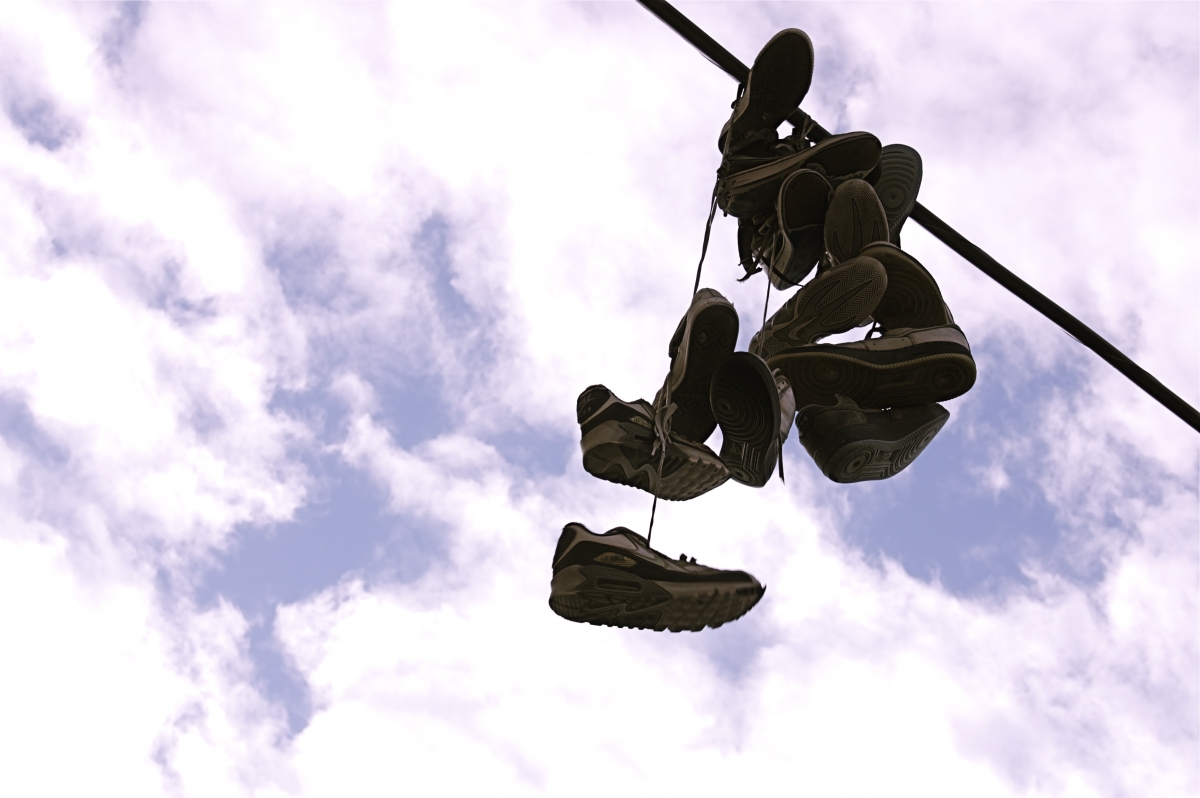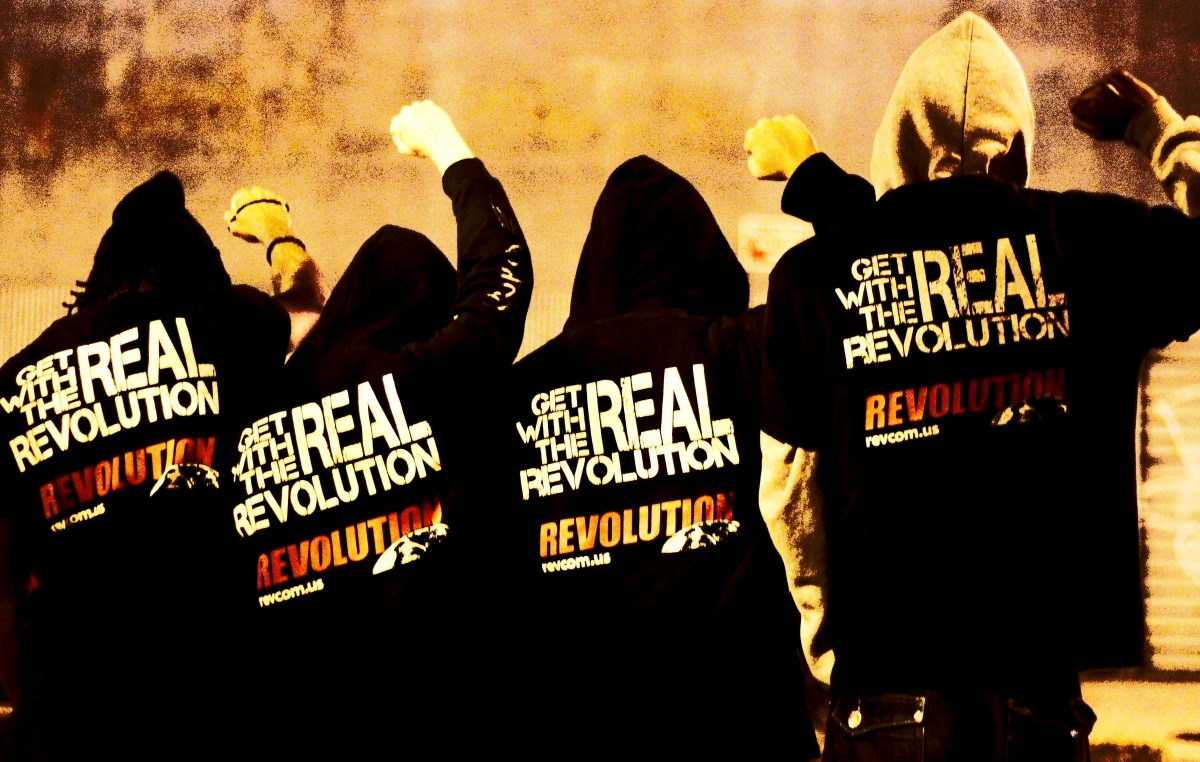
Forbidden City Breakers outside of Sanlitun
Jamel Mims, multimedia artist, hip hop pedagogue, and activist, was awarded a Fulbright in 2008 to study hip hop in Beijing. When he got there, many locals questioned his quest: an American, looking for hip hop, in China? Most warned that he wouldn’t find much. But after not too long, he discovered an elusive underground hip hop scene rarely acknowledged by the Chinese mainstream. His research resulted in The Misadventures of MC Tingbudong, a participant-observant study and multimedia ethnography, exhibited in New York and Beijing. Mims’s work ranges from visual arts to political expression, joined by common themes of youth culture, social transformation and the urban environment. Based currently in New York City, he works with Fresh Prep, an educational program that uses hip hop music to help students review for the New York State Regents Exams. He is an active member of The Stop Mass Incarceration Network and The Revolution Club. The Nation sat down with Jamel to talk about his favorite rhymes, life in Beijing and the common thread between hip hop and activism. To see more of Jamel, check out his website, his interview with Democracy Now! and his piece in The Huffington Post about the jail time he faced in 2012 for nonviolently protesting stop-and-frisk. This interview has been edited and condensed.
What’s your earliest memory of hip hop? Or, more generally, what role did the culture play for you, growing up?
Hip-hop had always been a part of my household. I remember my older sister singing SWV songs, or, you know, the No Way Out album [Puff Daddy’s debut in 1997] and rapping all the lyrics to “It’s All About the Benjamins.” Hip-hop had always been part of the musical score of my life, and then growing up in [Washington] DC, there were unique aspects like the culture of Gogo, also a lot of funk, that made up the backdrop in terms of the sound of where I grew up. But hip hop for me, even early on, had always been about street reporting and on-the-ground truth-telling. And even looking back at it, which I didn’t [do] until much later, a lot of it had to do with, yes, toasting and boasting, but also urban street-telling. Telling the stories of people whose stories have more or less routinely been obscured from mainstream view. In retrospect, that’s the kind of role hip hop always played in my life. It’s the framework that I looked to to understand the world. It was definitely been part of a social framework that really shaped how I saw things and how I wanted to make my mark on the world. But there was also this aspect of truth-telling and reporting.
Popular
"swipe left below to view more authors"Swipe →

DJ Wordy at YugongYishan for the Section Six monthly hip hop cypher
Were you involved in the music at all? Or in break-dancing, graffiti, or any of the other arts first associated with hip hop?
DC was really interesting. There’s kind of a burgeoning scene now, but growing up in DC there really wasn’t a lot of opportunities for that. There were opportunities to play music and in elementary school we had a Gogo band, or in high school talent shows we would rap, but for me it was much less an artform that had stuck to that kind of traditional model of those four pillars [MCing, DJing, b-boying or break-dancing, and graffiti writing]. I was always into visual arts, always drawing. I guess in a sense I was rotating around the nebulous fifth pillar of things like comic books and kung fu movies, a lot of these things that bore an influence on hip-hop culture. I listened to a lot of A Tribe Called Quest and the Jungle Brothers were really formative for me in high school. There’s a lot of borrowing from the style of hip hop—I did a lot of drawing and animation, taking from the iconography or the style of hip hop and also comic books.
Do you have any favorite artists or albums? It’s a tough question, I know.
Yeah, especially having this on recording! People will go back to this and be like, what?
This can be off the record (ha!)…
Let me work backwards. The most recent projects I’ve liked have been latest Kendrick Lamar [good kid, m.A.A.d city] and also the most recent Flying Lotus project [called “Until the Quiet Comes”]. And then albums that were really influential on me: Blackstar of course [a group comprising Talib Kweli and Mos Def], People's Instinctive Travels and the Paths of Rhythm by A Tribe Called Quest. The first album I ever bought—I don’t think it’s the most important but I think it’s interesting—was No Way Out by Puff Daddy and Mase, with such classics as “Mo’ Money Mo’ Problems.” One that’s really stuck with me in terms of where it goes sonically, and really kind of pushing what an MC does, is Mos Def (Yasiin Bey’s) The Ecstatic.
I’ve been listening to a wide range of music since I lived overseas, including a lot of electronic: Twin Shadow, Crystal Castles, There’s this one DJ, Fatima Al Qadiri, she’s from Brooklyn but she’s a transplant [from Kuwait] and she has a project called Desert Strike which is her remembering coming to the States and playing [a Sega Megadrive game titled Desert Strike: Return To The Gulf] while her country’s being bombed by the United States. It’s a lot of sonic, cognitive dissonance.… About a year after getting to New York, I began getting into Outernational…a rock band whose ‘futurerock’ sound combines elements of folk, rock, hip hop and latin music, especially cumbia. In terms of the substance and musicianship, they’ve been compared to The Clash or Rage Against the Machine, but instead of anarchist influences, they espouse revolution and communism, and envision a world with “no borders or banks, no wars or tanks, no nations, no nations.”

Mao Zedong as imagined by graffiti artist Li QiuQiu
Tell me about your Fulbright in Beijing. How did you come to create your proposal?
I came to be in a position to do the project from studying Mandarin in high school. Kung fu movies and comic books were huge influences and at that time Japanese animation and culture were just the coolest things on earth, so I was taking several classes studying Japanese. At Sidwell [Friends School, in Washington, DC] they offered Chinese so I thought, I should take Chinese—a third of the alphabet in Japanese is Chinese.
For a large part of the time I was taking it, I couldn’t say anything. I remember going into restaurants and being completely embarrassed. My friends who took two years of Spanish would go to Adams Morgan and go order everything [in fluent Spanish] and here I am, three, four years into Chinese and having trouble with the menu. But fast-forward to Boston College, my junior year I decided to go abroad. To put this in context, Bush has just been reelected, and I was like, “I’ve got to get out of here and go somewhere.” So I go to study Chinese abroad—this is after seven years of having studied the language in a very mathematical, routine way. Now the windows were breaking out around that and being immersed in the city of Beijing, things came together. So I was there for a year and really fell in love with the place and the culture and people. And was putting those language skills to specific use.
The summer after my junior year, I linked up with this group of filmmakers called Danwei TV. They did this show called Sexy Beijing.… I stayed in contact with one reporter, who tells me that his girlfriend at the time is going to do a show about hip-hop and I’m like, “What? That’s nuts. I’ve been looking for hip hop in Beijing since I got here!” …So I go with the crew at Sexy Beijing to Section 6, which was like this monthly hip hop cypher [a rap freestyle battle]. We go in and start interviewing people, talking to different folks who make up that scene, and it just was really like, “Wow, I don’t think anyone is seeing this. This is extremely fascinating.” I feel like I’m right at home, right down the block, and I’m halfway around the world. At the time I’m wearing a shirt that says, in Chinese, “Ting bu dong,” which means “doesn’t understand” and I’m talking to different people who see the shirt, and are figuring out, “Oh but you do understand.” So people from the stage call me MC Tingbudong. And that’s where the name for the project came from.
After that summer [living in Beijing after studying there for a year], a friend comes to me and…he’s like, “You should apply for a Fulbright, I don’t think anyone has a finger on that, no one’s in a better position to do it right now than you.” I studied sociology undergraduate, which really informed the way that I proceeded with the work. The proposal was to understand China through hip hop: a multimedia ethnography [in the form of] a ten-month study in Beijing, entering into the field as a participant and an observer. And to come out the other end of it with a collection of anecdotes, photo-essays, photography—a multimedia installation of a snapshot of hip hop culture in Beijing. Who were the key movers and shakers? What did it feel like, sound like? So that kind of sociological perspective, [with] qualitative research and a more anthropological eye toward youth and street culture, is what informed my work.

Jasmine Solano at Opening Ceremony's 10-year anniversary party. Webster Hall, NYC
And how did the project change as it proceeded? Was there anything that surprised you?
[One] thing that I learned was that there was this kind of really intense struggle around which audiences to accommodate towards. It’s a similar thing that all artists [experience] and [is a facet of all] relationship between artists and patrons, but it’s really exacerbated in China by the Cultural Bureau [Ministry of Culture of the People's Republic of China] that censorship is so overt. But learning that there were those navigations, between what could [pass] the Culture Bureau and what could not, [and on top of that] there were also these navigations around what made things authentic, which had a lot to do with the content of people’s rhymes. That was a really intense struggle.… In the face of censorship, or ‘selling out’ [there’s] the conscious construction of authenticity. A good friend of mine, JiaWei, a member of Yinsanr [a trio of MCs] would say, “The difference between you over there (who’s ‘authentic’ in hip hop in the USA) and us over here, is that while you can tell who’s a member of the culture over there by the way they look, over here, we look the same.” While I don’t exactly agree with his analysis, he was expressing a need to consciously demarcate his identity from ‘phony’ emcees and inauthentic practitioners. You would have older emcees look to a time where things seemed more authentic, and try to project that style and ethos, in contrast to what they viewed as over-commercialization of current hip hop and younger emcees. The overarching story—the interwoven experiences of the two dozen or so artists, writers, rappers, dancers—tells one of [a] self conscious development of identity through the manipulation of symbol. Where which audience they would choose to satisfy—the commercialized and uninformed or the underground community—framed a defining characteristic of their artistic identity.
Give me an example of this kind of biting.
Claiming that Chinese emcees, and the hip hop community are just imitating what they see in the West, (or Korea and Japan)—this ignores a process of intersection and appropriation, and reduces the conscious agency of the participants to mirror. One group comes to mind, a rap metal band called Twisted Machine. People might hear them and say, they just want to sound like Linkin Park. But unlike [in] the US, rap developed directly out of the rock and roll movement in China. Much of what we in America might consider rap-rock, rap-metal, or a subgenre of rock, is the style of many of the oldest and most foundational rap acts. You would see examples of these all throughout the four pillars of hip hop culture in Beijing. Breakdancers accused of just biting the power move heavy style of Korean and Japanese breakdancers. DJ’s who just play Top 40 hits accused as being "too pop" or "too electronic." Rappers biting the style of whatever’s hot (it was "Southern" hip hop at the time) denounced as posers.
And at every turn, you would have practitioners flip that standard on its head: breakers like my homie, Sanr, who deliberately emulated the footwork of old school b-boys, dancing on crews with students at martial arts schools adding kung fu moves to their b-boy repertoire; emcees like Lil’ Ray aka Nasty Ray who sought to consciously root himself in the tradition of 90’s golden era hip hop. Even in studying and ‘biting’ these styles, there were conscious deliberations over what portions to emulate and what to leave out, infused with the deep and complex process of how to represent themselves. It’s not as if it would come out as a carbon-copy, even it they intended to do just that. Especially in the case of Chinese rap music, where they are constructing rhymes in a language with thousands of years of history, and foreign rhyme patterns!
Where did you display the final product of your multimedia ethnography, The Misadventures of MC Tingbudong?
It was on exhibit in New York. I also did an installation at the Trinity International Hip Hop Festival in Connecticut and also took parts of it down to DC. There’s an organization called Walking Tree Travel that works with the State Department to take youth from DC public schools abroad—I showed some of my work there. But mainly in terms of exhibitions—in New York, and also in Beijing before I left…. In 2009, I was compiling it for about a year, so I first exhibited it in 2010 and I exhibited it here in Harlem and then in 2011 around Chinese New Year, I exhibited it again downtown in Chinatown. The original intent was for it to be a conversation piece, a cross-cultural dialogue. Showing people back here how hip hop culture has informed culture—to take work from here and to show how it’s a conversation between cultures.

Sneaker Vine, of the typical variety found on the power lines of the Bronx, NY
What have you been working on since?
There’s a continuity between the work with The Misadventures of MC Tingbudong and what I do now with multimedia art, using photography and video, but also in terms of content: a lot of the same themes within the urban landscape [come up]. There’s influence in the realm of fantasy of urban myths and urban legends and superheroes, and then also looking at capitalism, gentrification, transformations in the city where people are pushed and pulled. A lot of these are themes that come up in hip hop, and that reoccur in my life, from Misadventures to what I do with The Stop Mass Incarceration Network, looking at the mass incarcerated as a class of people in the city. So I would first start out by saying that there’s a common thread behind it…doing my work for the purpose of societal transformation, and—looking at these different avenues whether it’s photography, film, street theater, activism—how these things all work towards this goal, even though these are different artistic works.
In 2011, I became involved with the Stop Mass Incarceration Network around a particular strategizing session, taking the organizing against stop-and-frisk to the next level. I worked with Cornel West and Carl Dix [a founding member of the Revolutionary Communist Party]…to raise the level of resistance to mass incarceration by injecting the movement with a wave of nonviolent mass resistance through civil disobedience. We had a number of different things we were doing, going around collecting stories of people who had had their lives enmeshed in the snare of the system of mass incarceration, having been targeted or stopped-and-frisked or harassed, or having gone to jail themselves or just gotten out and are being discriminated against. Hearing these stories and sharing these stories, collecting and recording these stories. [Jamel, along with others nonviolently protesting stop-and-frisk on a city-wide day of action in 2011, was convicted of disorderly conduct and faced up to twelve months jail time. In November 2012, he was found not guilty. Other protesters await trial.]
So hip hop is a kind of throughline in this relationship you see between your art and your activism?
I would say there’s a very direct link between hip hop culture and working on and looking at…the problem of mass incarceration. I guess in two ways. In one way, [both hip hop and mass incarceration] effect or deal with the same population, whether you’re talking about the youth that were trapped down in the ghettos and barrios of the 60s and part of the 70s in places like the Bronx where thousands were forced to evacuate with the cross-Bronx expressway, to kids who now have terrible schools, who are walking to school feeling like they’re criminals. It’s this same section of people who are treated as less than human. And then, on the second hand, “Fight the power”—that’s a hip hop phrase [the title of a song released by Public Enemy in 1989]. There is also this ethos in hip hop that is very much about on-the-ground reporting and giving a voice to the voiceless. “Broken glass everywhere, people piss on the stairs and they just don’t care,” that’s a Grandmaster Flash record, a powerful piece of truth-telling that exposed and helped to sharpen and focus [historical racialized inequality]. And I guess a third point that’s related, when you’re looking at where hip-hop culture came from and you look at the problem of mass incarceration, these things are very, very related. You have policies like stop-and-frisk and racial profiling, so common and prevalent for folks of our generation, [which] have very much to do with the experience of the system in reaction to the revolutionary upsurges of youth in the 1960s and 1970s. That was a time when the system got rocked back on its heels: black and brown youth who were forced into these conditions [working to undo] what’s called the “social order of America.” You have the answer to that threat, to that potential threat, when you look at a situation like now where there’s nearly 30% unemployment in the black community among males age 18-29 and a lot of the same social ambitions that existed in, even have been exacerbated since, the 60s. The answer [to this potential threat of social change] is mass incarceration. Hip hop really came of age right up under this New Jim Crow, and it speaks against a lot of what totally enveloped it.

The Revolution Club on October 22, 2011, National Day of Protest Against Brutality and the Criminalization of a Generation, NYC
Tell me about how your experience with hip-hop and with activism informs your teaching.
I’m pretty lucky to have found this position—I work with a program called Fresh Prep, which uses hip hop and youth culture to coach kids [ages 17 to 20] on their Regents exams. So it’s a test prep program, like you’d have SAT coaching or history coaching [but] with Fresh Prep, you set up speakers and you have different history albums—all the way from ancient civilization to the Neolithic revolution, to the Cold War/Post-Cold War era—and they’re all different songs, different raps, that have different content units on them. So you come in and it’s a party!…We take the culture students are enmeshed in, youth culture, and package the content they need to know in order to pass the Regents in it. We see youth culture as a culture in itself, and we transform what would be otherwise unrelatable and unintelligible content (i.e. Global History Regents Preparation) and package it in the performance style and assessments of that culture. What’s the result? An innovative, student-centered curriculum, where the teacher becomes part MC, spitting lyrics, part DJ, playing rap music filled with historical content, and part game show host, conducting assessments as family feud games and rap battles. Students build confidence as their culture and experiences are welcomed into and lead the classroom, in stark contrast to their normal school day, where youth culture is treated, at best, as a distraction, and something they should check at the door, alongside their cell phones, social media accounts, hats, hoodies and sagging pants.
And you also teach Chinese?
I’ve been teaching Chinese at after-school placements at different schools in the West Village. It’s been really good to experiment with hip-hop pedagogy and using that with Chinese…. Hip-hop pedagogy is not super huge on the east coast, but there’s centers at UC Berkley on the west coast, there’s the Hip Hop Education Center here at NYU, it’s a slowly expanding field of pedagogical inquiry. There’s this dude Christopher Emdin who’s doing the science bowl with the GZA, having kids make up freestyle rhymes about science, things like that. So it’s pretty new as a field of study.… In the future I’d like to record an album to use for teaching purposes for Mandarin language.
What are you looking forward to next?
Well, with regards to The Misadventures of MC Tingbudong, I’m producing a book of photo essays from the exhibit, so keep a look out for that this year. The focus of my art has always been youth culture and the urban environment, while my method has shifted from participant observation to encompass social activism; from reporting about societal shifts in youth culture to creating shifts in youth culture; from following to leading.
I’m most excited about [the activist organization] The Revolution Club: fighting the power, transforming the people, putting revolution and communism back on the map, and a culture of revolt against this present-day revolting culture! Whether [we’re talking about] patriarchy or the oppression of minorities, wars for empire or imperialism's stranglehold on the third world, small reforms won’t do-it will take nothing less than a revolution to actually address and uproot these social contradictions once and for all. We're currently working for the premiere of the film, BA Speaks: Revolution and Nothing Less!—a 6+ hour call to revolution that can change how you look at the world, and what you do with your life—coming to theaters this March.
I’m continuing to produce photography, illustration, and film around the particular social contradiction of mass incarceration. With the Stop Mass Incarceration Network, we are calling for a national outpouring on February 26th, on the one-year anniversary of the vigilante murder of Trayvon Martin. We are attempting to shift the national discourse with initiatives like the Bear Witness Project—a collection of stories of those criminalized by policies like stop and frisk, those who are warehoused in prison across the country, and denied rights upon their release—to put a human face the system of mass incarceration, and highlight its genocidal trajectory. I look forward to, in particular, developing a body of work around this issue: The Mass Incarcerated—a collection of digital art, photos, film and essays about the lives and communities enmeshed in the New Jim Crow.


